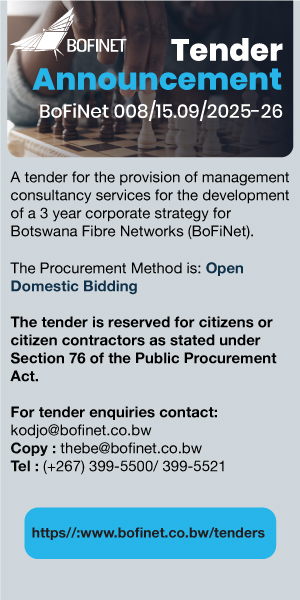SADC launches payment system
Southern African Development Community (SADC) countries, which fall under the Common Monetary Area (CMA), will this July pilot an integrated payment and settlement system that once adopted will help the regional block lower transaction costs and improve efficiency.
SADC Payment Project team who were in Gaborone for a three-day SWIFT conference this week said the single cross border settlement model will allow both governments and companies to settle payments for commodities obtained in the region all at once, said Tim Masela, who chairs the SADC payment system sub-committee. The payment is expected to reduce costs associated with the different settlements that are currently in place in different member country, Masela who is also head of national payment system department system at South Africa Reserve Bank (SABR) explained.
The idea was initially mooted in South Africa and received a green light at the Committee of Central Bank Governors (CCBG) of Development SADC, at its meeting held in Pretoria in May 2009. The SADC Payment System Project team - a CCBG sub-group responsible for payment systems - had requested that it be allowed to initiate a process to develop a conceptual framework for an integrated regional payment environment. Legal and regulatory matters relating to the project are still to be ironed out by the governments involved ahead of the piloting exercise.
Despite the delay, Masela voiced optimism during the SWIFT conference, saying ‘a lot of work has already been done’, and that they are looking forward to piloting the project in the next two months. “For now, only four SADC countries have been selected to pilot the system using the South African Rand,” proclaimed Masela. Lesotho, South Africa, Swaziland and Namibia which all fall under the CMA that use the Rand will test the project, which will also be rolled to other SADC countries. Masela said the sub-committee involved in the project would at a later stage make recommendations after consultations as to the suitable currency to be used for the SADC region as a clearing and settlement currency.
“We will look at the reality on the ground,” he added. SADC banking association chairperson Leina Gabaraane said he is excited that the private sector, which including mainly commercial banks have been supportive of the project, which is expected to reduce barriers and ‘create confidence in the regional settlement environment’. “This project will also be crucial as we try to deepen financial integration with the region,” said Gabarrane, who is also Stanbic Bank Botswana Managing Director.
It is only when there is efficiency in the banking and financial services sector within SADC that members can think of increased Foreign Direct Investment (FDI), he said, adding: “Right now each country has its own payment system which is not cost effective.” The launch of the payment system by SADC will pave way for the establishment of regional central bank in 2016 and a single currency in 2018. A senior official at Trust Link, a payment solutions company that is registered with SWFT hailed the proposed single payment system. “We definitely support this,” said Chief Executive Tertius Vermeulen. Trust Link is ready and well positioned to help the SADC region with payment and settlement solutions.
“Payment is the last process under trade and no one wants to be inconvenienced,” said Vermeulen. According to Masela, the SADC payment system team will ensure that convertible and user friendly platforms are adopted in case they incorporate such system into other regional bodies such as Common Market for East and Southern Africa (COMESA) and East African Community (EAC) under the proposed free trade area agreement. Ravi Shunmugam, Head, First National Bank Payments, and In-Country Payments Leader South Africa – SADC Payments Project stressed that the project will go a long way in ensuring commercial banks and central banks within the region are interconnected to ensure easier access to financial services and payments.






